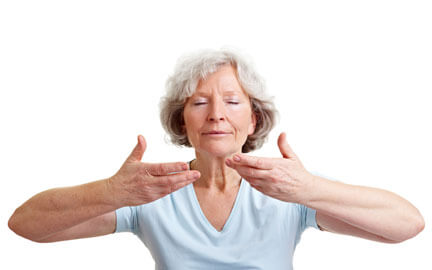
by mobilityplus | 4th Mar, 2019 | Health
We have all hit that point during the day where the stress of getting everything done becomes all too much. Ever approaching deadlines and worries in our personal life can quickly impact the way we behave and interact with those around us.

There are, however, ways in which we can take control and give our minds a much-needed respite. As you may have already read, the practice of mindfulness and meditation is becoming more and more popular. With accessible recourses like Headspace available, learning about these techniques and their benefits is much easier.
One part of using meditative techniques to tackle anxiety is breathing exercises. While it’s something we do all day, every day without noticing, many of us forget the benefit of focusing on our breath to bring some solace to our mentality. About 20% of the air we inhale is used by our brain, which means it uses three times as much energy as our muscles do.
What are the Benefits of Breathing Exercises on the Mind?
The benefits of conscious breathing exercises are varied. From being able to alter one’s mood to actually encouraging longer life and a healthier body.
Emotional Stability
Some consider the most powerful benefit of breathing exercises is on one’s mind. By manipulating our breath and focusing our attention on inhales and exhales, we can drastically change how we feel. At times of extreme stress, fear, sadness or joy the heart tends to race and our lungs seem to work in overtime, all adding to that feeling of anxiety and emotional unrest.
Be mindful of when occurrences like this arise. Take the time to step back for a few minutes, breath slowly in through your nose and exhale through your mouth. Focus on the feeling of your chest rising and falling and how your body feels against the surface it’s sitting or standing on. In doing so your body will start to relax, the heart and lungs begin to fall back to normal levels, while filling your mind with oxygen allowing you to become more focused and alert.
Eases Pain
Often, when we are confronted with pain, be it physical or mental, we tend to hold our breath. Most of the time we do so without even realising. Yet if we learn and adapt to breathe through the pain, we can learn to manage it and also decrease the level of pain we experience. Deep breathes help oxygenate the blood which then floods the brain causing it to release endorphins which subsequently help reduce stress in the body and decrease levels of pain.
Weight Loss
Body competition is often a cause of stress and anxiety, there are, however, ways in which breathing exercises can assist in managing body weight. As we feed our heart with oxygen, we increase our cardiovascular capacity and subsequently the amount of oxygen which is delivered to our cells. By feeding our cells in an aerobic state, we encourage the burning of fat stores, which can work towards a leaner body shape.
With mental health awareness becoming ever more supported, there is a growing number of ways in which we can keep our minds healthy. Practicing breathing techniques is a free and easy step towards training our mind, keeping them alert and reducing symptoms of stress and depression.

by mobilityplus | 4th Mar, 2019 | Health
Today, approximately 850,000 people suffer from Alzheimer’s in the UK. And that number is set to rise, with an estimated number of over one million by 2025. Yet, there’s a new theory to slow down the risk. We uncover the benefits meditation can have and how it could help reduce the onset of Alzheimer’s now.

Alzheimer’s is an illness associated with degenerating functioning of the brain. It’s most commonly linked to old age, with the most amount of sufferers being over the age of 65. The disease can have profound impacts on your mind, making it harder for an individual to remember and even think for themselves.
What is meditation?
It’s an ancient practice whereby you train the mind to be at peace with your thoughts. The aim is to have a greater awareness of your mind, concentrating on creating the perfect level of calmness.
How to start meditating as a beginner?
There are many different forms of meditating, so it’s easy to find the right method to suit you. If you’re new to this activity, then we have some simple suggestions to help you get started.
First, you should focus on your breathing. Try taking ten to fifteen minutes every day to clear your mind. Choose your quiet place, whether it’s your bedroom or the local park, and find a comfortable position. Then, close your eyes and turn your attention to the rhythm of your breathing. Focusing on every intricate breath becomes the object focus of meditation, and you should try to keep your mind on this sensation and block everything else out.
Meditation can be done alone, in the comfort of your own home, or you can invite your family and friends and do it together.
What are the benefits?
By relaxing your breathing and your body through meditation on a regular basis, it can have profound impacts on your wellbeing. Research has found that meditating can change the way you control your emotions, improve your concentration, and boost your happiness levels.
How can this relate to Alzheimer’s?
Studies have found that consistent meditating could lead to a growth of brain cells. As Alzheimer’s impacts the mind repeated forms of mediation could help to slow the onset of the disease and protect an individual’s brain from deteriorating.
What’s more, other research has found that through performing mediation (this study looked at a specific form of meditation called Kirtan Kriya) over 3 months had significant benefits to memory and cognitive functioning, and results would only seek to improve as time goes on.
It’s important to take time to yourself and creating a calmer mind. The benefits of meditation are so great, but it’s the getting started that’s always the hardest. Begin with our suggestions and look to your local community to see what’s available.
Find out more about how Alzheimer’s is diagnosed in our latest blog post.
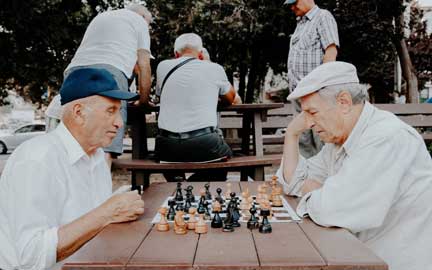
by mobilityplus | 21st Jan, 2019 | Health
Dementia is a terrible disease which affects more than 850,000 people in the UK today.
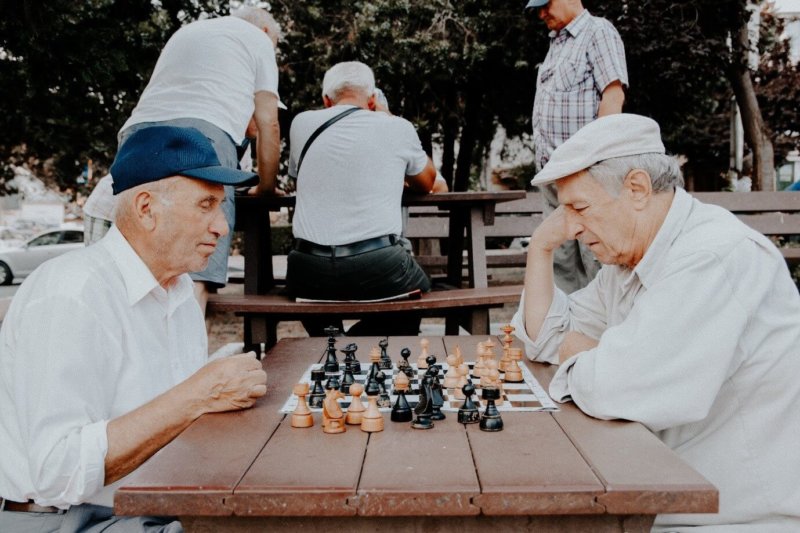
Dementia is a terrible disease which affects more than 850,000 people in the UK today.
In simple words, dementia is a term that we give to certain symptoms affecting different aspects of brain functions. They can get worse over time and influence the way we live our lives.
The brain
The brain is the most complex structure, with cells, bundles of nerves as well as blood vessels all interconnected and working together to keep us alive every day. When these cells become damaged and all the interconnections start to break down, people start developing dementia.
This is the reason why dementia is so difficult to understand and, as a result, to treat. The complexity of the human brain has been the most miscellaneous object of study for years and, while scientists and doctors have come up with new theories, a definitive treatment for dementia is yet to be found.
However, 2018 proved to be a turning point for the battle against dementia, as scientists developed new theories on why many drugs had failed to prevent or, at least, slow down the early stages of dementia.
Moving away from strictly scientific and medical research, new approaches are now being considered to help patients as well as caretakers. Virtual reality and reminiscence therapy are at the forefront, thanks to the progress being made by technology, which now also offers more accessible devices and solutions.
New treatments
Virtue, a UK healthcare start-up committed to developing innovative solutions to tackle the symptoms of aging, has launched an app to support reminiscence therapy through a patient’s memories and experiences. Through the use of innovative virtual reality handsets, patients affected by dementia can go back in time and relive past experiences and familiar places.
Memories are personal and unique, so relatives and caretakers can choose different pictures and videos to take back their loved ones and be sure they enjoy their travel in time. The app can be used on any smartphone or tablet, so they can use it anytime from the comfort of their home.
Reminiscence therapy has proven to be an effective method to improve and support mental and cognitive health in people with dementia and, in fact, “dementia villages” are now being developed in Europe.
The most well-established village, which opened in 2015, is in the Netherlands and the UK is planning to have one in Kent by the end of 2020. These villages are real communities with their homes, shops and places to eat – all designed for dementia patients in order to provide them with firm reference points and familiar surroundings.
Doctors and specialists work around the clock to offer 24-hour care to the residents, who manage their daily routine – from washing to cooking – with constant support of a specialist.
These villages make it possible for dementia patients to enjoy a coffee in the local café and go for a walk in the park, and if they get lost or confused, they can always find a ‘villager’ to provide assistance. This enables patients to live a normal life whilst being provided with care and support and in a safe environment.
Natural remedies
In addition, natural remedies can also be used to support brain and memory at a younger age. While there’s no scientific evidence, Ginko Biloba is a popular health supplement, which is said to help prevent memory loss.
A healthy and well-balanced diet is key to helping enhance brain functions as well as improving memory and concentration. Foods rich in healthy fats and omega-3 such as salmon, olive oil and dried fruit should always be included in your diet.
The ground-breaking research done by doctors means treatment for dementia has come a long way. Although there may be some way to go to finding a cure, the advancements in technology and care has given sufferers the opportunity to enjoy a more fulfilled life.

by mobilityplus | 21st Jan, 2019 | Health
How many times have you heard the saying “new year new me”? The new year gives us a boost to make some necessary changes to our lifestyles. The old supplement adage is that they are never going to replace a healthy diet and regular exercise regime. However, they help keep our health at an optimum level. So, are our attitudes outdated?

For the brain
Scientists and researches alike have heavily studied the benefits of vitamin B6, and it is recommended as a supplement for all ages. Vitamin B6 is needed for health, nervous and psychological function, by helping to support the neutrons transmitting messages around the brain. Not only is it great for the brain, but it’s an “all-rounder” from helping produce more collagen in the skin to hormone regulation.
For the immune system
The flu season is in full flow, and other than regular hand washing and wrapping up warm. The echinacea flower plant gives you another layer of protection. It’s packed with antioxidants and has been used for centuries to heal wounds and fight nasty infections. They are available in both tea and supplement form, but if your body is lacking in hydration – tea would be the best option.
For the skin
During the winter months, we arise to darkness and the nights falls upon us before dinner time. We get minimal sunlight, and our skin becomes in desperate need of some Vitamin D to help skin cells grow and repair. Yet, how will you know when your skin is in need of vitamin D?
The tell-tale signs are often when your skin gets quite dry and irritable. To give your vitamin D supplement a helping hand, you can try adding specific foods that are rich in vitamin D, like tuna, soy milk, eggs and fresh orange juice.
Collagen supplements are another great supplement for clearer and smoother skin. They are available in tablet, liquid, powder or cream form. Additionally, it promotes joint health, and studies have shown it can reduce symptoms of arthritis.
For nails
If your nails are looking on the dull side and are prone to breaking quite often, then vitamin C might be your answer. Vitamin C is often the go-to supplement for nail growth and strengthening nails. It protects the nails against any damage and speeds up the growth of collagen.
For hair
Vitamin A is often the most commonly associated supplement to strengthen our locks and keeps our scalps moist. However, it’s vital to note that too much vitamin can speed up hair growth, by putting too much pressure on the hair follicles.
To maintain shiny and healthy-looking hair, you may want to add vitamin E to your diet. Particularly, if you suffer from brittle hair, it may be the boost to achieve those heavenly glowing locks.
It’s important to note that supplements aren’t a miracle cure if a healthy diet and exercise regime isn’t in place. Research suggests it takes between 2-4 weeks to see a difference and to notice the long-awaited positive results. It’s clear that more and more people are using supplements, to support their overall wellbeing.
Purchase a pill box, if you need a visual reminder to take your supplements. Be sure to check how the supplements should be consumed, as specific supplements need to be taken with food.

by mobilityplus | 3rd Jan, 2019 | Health

Do you know where the most dangerous place in your home is? According to a research carried out by the American Centre for Disease Control and Prevention, the bathroom is the most dangerous.
Most injuries happen during our personal care routine, whilst taking a shower or a bath. This is especially prevalent in older age. Slippery surfaces are not the only factor causing accidents in the bathroom; the combination of water, humidity, sharp objects and electricity makes the bathroom the most treacherous room in your house.
Below, we’ve listed the most dangerous parts of the bathroom and a few pieces of advice on how to avoid injuries in the long run.
The shower
Although shower time is considered to be a relaxing moment to unwind in, taking a shower could easily lead to injuries when not paying enough attention. The mix of water, soap and moisture creates a slick and unsafe surface where the chance of falling is increased significantly.
A walk-in shower is an ideal design choice to prevent accidents as it can feature useful aids such as a fold away shower seat or safety grab rails to enable you to move with freedom and confidence. Walk-in showers also offer generous space and can include a no-door option for wheelchair access if required.
Sharp objects
Wherever you store sharp objects and electrical appliances in the bathroom, consideration should be taken to minimise the risk to all users. Scissors, nail cutters, razors and hair dryers can be a hazard for several reasons. If you have grandchildren, having dedicated storage for these hazardous items can reduce the risk, as young children are prone to touch and play with anything they find. These dangers are not just limited to children but very much extend to adults too. Forgetting to put your scissors and electrical objects back in their storage space may increase the chance to accidentally get cut. For this reason, it’s always important to keep a small first aid box at your fingertips to clean any wounds and avoid infections should an accident occur.
Hot water
It won’t come as a surprise that many people are not aware of water temperature safety levels. As we get older, our skin becomes more delicate and high-water temperatures can scald and burn, which can permanently damage our skin. The Department of Health states that water temperatures should not exceed 44°C, which is sufficient to prevent bacteria and germs to spreading. In addition, keeping the water temperature of your home under control will also avoid issues to your heating system during the cold season.
Sockets (shaver points)
According to ‘Electrical Safety First’, sockets should be placed at least three metres from the bath or shower, however, this is not always feasible. The same rules also applicable to extension cords, but with feasibility not always permitting, making sure you have some simple safety rules of thumb is essential. Make sure that your hands are not wet before plugging in any electrical device and try to stay as far as possible from water when using them.
Baths
Getting in and out of the bath can be tricky for all age groups. Young children not aware of the dangers can often slip whilst standing in the bath, especially those who see bathtime as playtime. Older age groups may struggle to raise or lower themselves into or out of the bath, this could stem from common problems such as a bad back or other age related mobility issues. A simple, well placed grab rail can help bathers of all ages stay safe, or a more long term solution may be to replace your traditional bath with a low-entry walk-in bath.
To wrap up – take care in the bathroom, plan out the potential risks and apply caution to minimise the opportunity for injury. For inspiration on planning a new bathroom for the safety conscious or baths for the elderly, find out more about our range of accessible bathrooms.
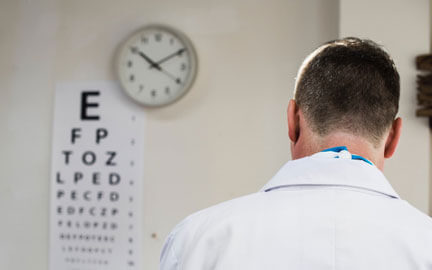
by mobilityplus | 19th Nov, 2018 | Health
As an illness often associated with old age, it can sometimes be hard to notice the signs of Alzheimer’s early on. Yet, with growing advancements in technology, are there new ways to diagnose Alzheimer’s?
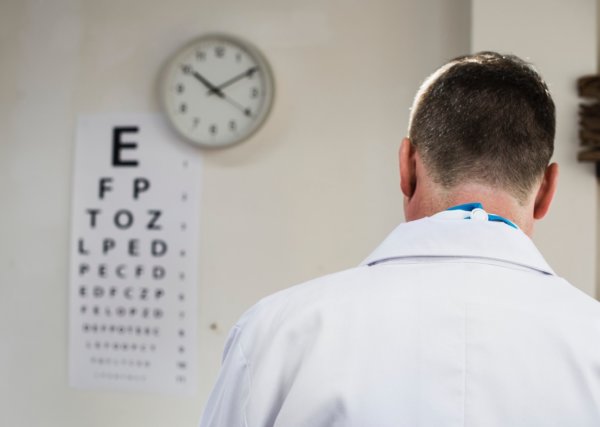
As a form of dementia, Alzheimer’s slows down the cognitive processes in your brain. It can affect your ability to remember things, from birthdays to your most recent conversation, as well as your ability to think: planning occasions or making informed decisions can become that much harder.
Know the symptoms of Alzheimer’s
One of the first telling signs of the disease is minor memory loss. As the condition evolves, more symptoms reveal themselves. Further difficulties can include:
- Becoming bewildered in familiar surroundings
- Issues correlating with speech and language
- Belligerent change in personality
- Trouble with sights, including hallucinations
Alzheimer’s is a gradual disease whereby the symptoms become progressively worse throughout time. So, being able to spot the signs and diagnose for treatment – before it’s too late – is undoubtedly useful. Here, we outline some traditional ways it can be diagnosed as well as some more modern solutions.
Mental ability tests
Testing the strength of your mental capabilities can be done through the means of a mental ability test. This is where a specialist will assess the functioning of your brain, such as memory or thinking.
These tests give an overview as to whether the individual can comprehend the symptoms; knows their whereabouts (the date, time, their location), can remember a list of words or mathematical sums, concentration span, speech and language skills.
These tests can be used by doctors to identify what might be going on with an individual. Yet, as someone’s intellect can have influence over the results, it’s worth noting that this test shouldn’t be used solely to determine a diagnosis of Alzheimer’s.
CT or MRI Scan
As Alzheimer’s can impact your brain, you can have scans to identify any possible damage caused by the disease.
An example of this is a CT scan, which uses X-rays to give a more in-depth image of inside the brain. There are also MRI scans, which is performed using strong magnetic fields and radio waves to generate a detailed insight into what’s happening inside the body. The benefits of this method of testing are that it can quickly identify any issues, so a doctor can effectively give a diagnosis and advise treatment plans.
Genetic test
With the advancement of technology transcending into all walks of industries: it’s no surprise that it has now made its way into disease diagnosis for Alzheimer’s.
A recent research study developed a genetic test that can predict at what age someone may develop Alzheimer’s. The test effectively looks at your genetic code and the different gene variations that can influence the risk of getting Alzheimer’s. This is a ground-breaking development that will lead the way for progressive methods in predicting who is most likely to develop Alzheimer’s.
How to stop Alzheimer’s
There is no clear suggestion to prevent Alzheimer’s as the cause is still yet to be found. A simple way to decrease your chances is to maintain a healthy lifestyle. As Alzheimer’s has links to cardiovascular disease, taking steps to improve your cardiovascular health is a great place to start.
- Try quitting smoking
- Reduce your weekly alcohol intake
- Ensure you’re getting a healthy balanced diet (including 5 portions of fruit and vegetable every day)
- Find more time for exercise every week – try to do at least the recommended 150 minutes.
There are also other suggestions to help stimulate your mind and promote happiness.
- Try doing some brain training activities such as crosswords or puzzles
- Push yourself to read more books and discuss what you’ve discovered with your friends and family
- Start a new hobby that you’ve always wanted to try – you could find something in your local community to help meet new people.
If you’re looking for more information or have any health concerns, then we suggest contacting your local GP. If you feel inspired to get your brain more healthy, read our latest blog post on some top brain training activities.











